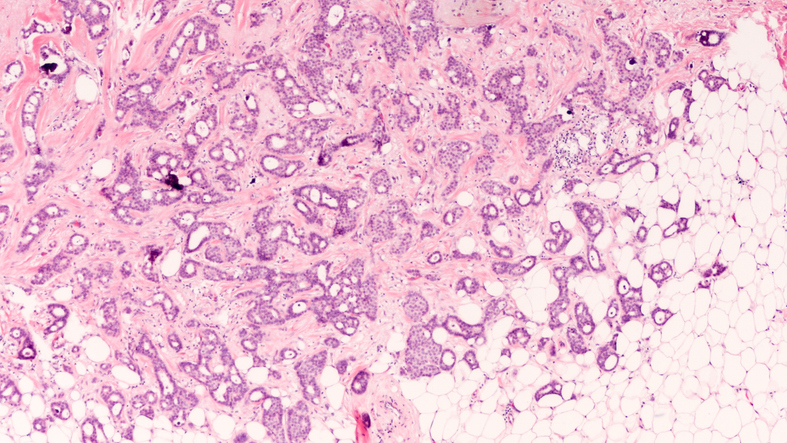
Certain patients with advanced estrogen receptor (ER)–positive, human epidermal growth factor receptor 2 (HER2)–negative advanced breast cancer that has progressed during or after aromatase inhibitor therapy with or without a CDK4/6 inhibitor may benefit from treatment with the oral selective ER degrader imlunestrant, according to results of the phase 3 EMBER-3 trial published in New England Journal of Medicine.
Imlunestrant alone significantly prolonged progression-free survival (PFS) in patients with ESR1 mutations compared with standard therapy, and imlunestrant combined with abemaciclib prolonged PFS compared with imlunestrant alone regardless of mutation status.
“Imlunestrant, as monotherapy or in combination with abemaciclib, provides an oral targeted-therapy option after progression during endocrine therapy in patients with ER-positive, HER2-negative advanced breast cancer,” study researchers concluded.
There is an unmet need for effective treatment options for patients with ER-positive, HER2-negative disease that progresses after treatment with an aromatase inhibitor, with or without a CDK 4/6 inhibitor. The EMBER-3 trial enrolled 874 patients and randomly assigned them 1:1:1 to imlunestrant, standard endocrine monotherapy, or imlunestrant-abemaciclib. The primary end points were PFS with imlunestrant versus standard therapy in patients with ESR1 mutations and in all patients and PFS with imlunestrant-abemaciclib versus imlunestrant in all patients in randomized treatment groups.
Of the 874 patients enrolled, 256 had ESR1 mutations; among this group, median PFS was 5.5 months with imlunestrant compared with 3.8 months with standard therapy.
“Owing to evidence of nonproportional hazards, which make interpretation of the hazard ratio problematic, a restricted mean survival time analysis was conducted,” the researchers wrote. Estimated restricted mean survival time at 19.4 months was 2.6 months longer with imlunestrant (7.9 vs 5.4 months; 95% CI, 1.2-3.9; P<.001). Among all patients there was no difference in median PFS between the 2 treatments; median PFS was 5.6 months with imlunestrant compared with 5.5 months with standard therapy.
“In a finding in line with those of other trials of new selective ER degraders, the benefit of imlunestrant over standard therapy was more pronounced in patients with ESR1 mutations than in those without ESR1 mutations,” the researchers wrote. “Although we acknowledge differences in the enrolled populations and trial designs, these results closely mirror those reported in the EMERALD trial with elacestrant, a new selective ER degrader with dose-dependent mixed ER agonist–antagonist activity.”
Median PFS was 9.4 months for patients assigned imlunestrant-abemaciclib compared with 5.5 months for those assigned imlunestrant alone (hazard ratio, 0.57; 95% CI, 0.44-0.73; P<0.001). This benefit occurred regardless of ESR1 mutation status.
The safety profile of imlunestrant was favorable, according to the researchers. Incidence of grade 3 or higher adverse events was 17.1% with imlunestrant, 20.7% with standard therapy, and 48.6% with imlunestrant-abemaciclib-. Adverse events leading to dose interruptions of imlunestrant, abemaciclib, or both occurred in more than half of patients (55.3%), with dose reductions occurring in more than one-third (39.4%) and discontinuation occurring in about 6%.
Commenting in a press release, Komal Jhaveri, MD, section head, Endocrine Therapy Research and clinical director, Early Drug Development at Memorial Sloan Kettering Cancer Center, and one of the study’s principal investigators, said, “The median progression free survival observed in EMBER-3 is among the most compelling we’ve seen in CDK4/6 pre-treated ER+, HER2- advanced breast cancer patients and indicates a potential shift in the therapy options we provide for these patients, which are currently very limited. The benefit and safety profile of the imlunestrant and abemaciclib combination signal a potential new all-oral option for patients.”







 © 2025 Mashup Media, LLC, a Formedics Property. All Rights Reserved.
© 2025 Mashup Media, LLC, a Formedics Property. All Rights Reserved.